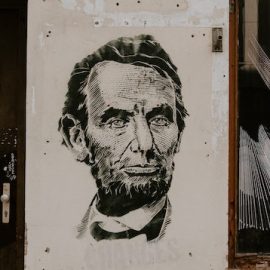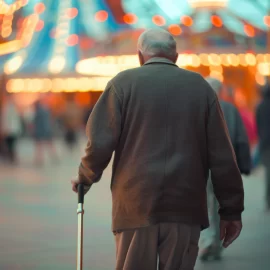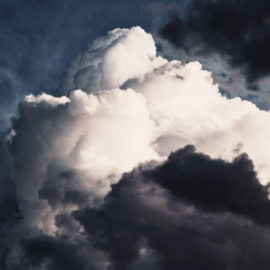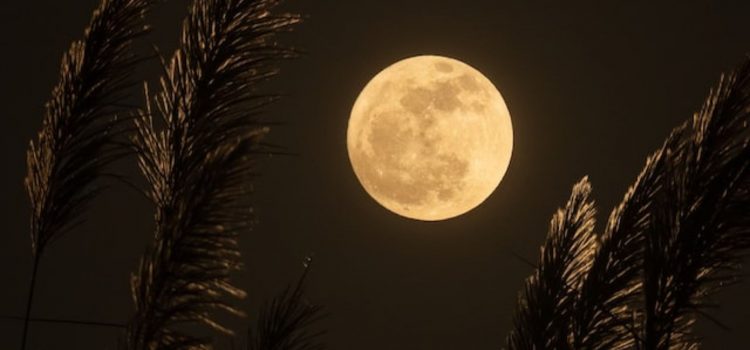
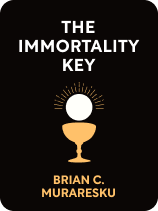
This article is an excerpt from the Shortform book guide to "The Immortality Key" by Brian C. Muraresku. Shortform has the world's best summaries and analyses of books you should be reading.
Like this article? Sign up for a free trial here.
What was the purpose of the Eleusinian Mysteries? What happened during the secret rites of the Mysteries?
The Eleusinian Mysteries was a secret cult practice that existed for almost 2,000 continuous years. Yet, despite the enormous timespan and the profound importance of the Mysteries, there is no detailed record of what exactly happened during these rituals.
Keep reading to learn about the Eleusinian Mysteries, according to Brian Muraresku.
The Eleusinian Mysteries
The Eleusinian Mysteries were the heart of the religious tradition in Greece as well as in Greek settlements in Italy and Spain, when Christianity arrived in the region in the first century AD.
Muraresku argues that the Mysteries are a crucial link between polytheistic pagan traditions and Christianity, and he says that the mystical experience happening here was likely facilitated by psychoactive substances.
The Eleusinian Mysteries involved secret rituals celebrated annually around the fall equinox (harvest time) from about 1500 BC until AD 392, when the Mysteries were outlawed by the strictly Christian emperor Theodosius. So, the Mysteries continued to be practiced for around 300 years after the arrival of Christianity.
| The Lesser and Greater Mysteries While the Eleusinian rituals were open to all classes of people, from the highest class to the slave, all initiates were required to prepare for half a year before participating. Yale Philosophy Professor Mara Lynn Keller explains that there was a series of preparatory rituals (called the Lesser Mysteries) from early spring to late summer, involving making atonement for one’s wrongdoings, to be sure one was purified for the initiation. The Greater Mysteries would then take place over the course of nine days around the autumnal equinox. The ritual began with a procession along the sacred road from Athens to Eleusis. Subsequent days included bathing in the sea, sacrificing a pig, giving offerings from the harvest, undergoing healing rites, dream interpretation, theatrical performances, drinking the sacred beverage kukeon (also spelled kykeon), seeing visions, honoring the dead, and then finally re-entering the world transformed. |
Some of the facts Muraresku gives us about the Eleusinian Mysteries from archaeological and written sources are as follows:
- The rituals were devoted to Demeter and Persephone: In mythology, Persephone spends half of the year in the underworld and half above ground with her mother Demeter. So, she undergoes a continuous cycle of death and rebirth, which causes the seasons. The rituals, then, are a means for humans to communicate with Persephone, so she can reveal the secrets of death and rebirth to them. (Shortform note: Some people actually believe that the central myth of Christianity—God, the Father, sent his son, Jesus, to Earth to die and be resurrected—is essentially a “masculinized” version of the Greek story of Demeter and Persephone.)
- There was a divine feminine element to the Mysteries: In the earlier days of the Eleusinian Mysteries, Muraresku tells us that only women could be initiated. Later, men would be allowed, but women remained in charge of determining who was worthy of initiation. We’ll discuss the importance of this divine feminine element in the next section. (Shortform note: As noted above, religious studies scholar Mara Lynn Keller agrees that women were central and sacred to the Mysteries and were the leaders of the rituals, but she argues that the Mysteries were always open to anyone who undertook the serious half-year preparation required for initiation.)
- The rituals centered around a sacred drink: Muraresku points out that written sources indicate that a drink called kykeon was central to the rituals, as a sacrament prepared by honored priestesses. He says kukeon is known to be barley-based, so it’s assumed to be beer. Muraresku believes it was not regular beer, but beer containing psychoactive compounds. Later in the guide, we’ll discuss his evidence to support this. (Shortform note: Also spelled kykeon, this beverage is described in Homer’s Iliad as containing water, barley, herbs, and goat cheese, and in The Odyssey, the sorceress Circe uses it to make a magic potion that turns men into pigs.)
- Participants were transformed by the experience: In the vague written accounts of participants’ experience in the Mysteries, Muraresku says there is a common theme of radical transformation. He says there are descriptions that recount the feeling that the participant was transformed into a god/goddess themselves and understood that they were immortal. This experience is referred to as “apotheosis” or deification—meaning “one who becomes a god,” and this concept has been used in the Christian church in reference to the Eucharist and consuming the flesh and blood of Christ. Muraresku believes this indicates a connection between the Mysteries, the psychedelic experience, and the Eucharist.
(Shortform note: One of the more common experiences reported in recent research by people who have had psychedelic experiences is that of a perceived encounter with “God” or an “ultimate reality.” A Johns Hopkins study reported that more than two-thirds of self-identified atheists shed that identification after a psychedelic experience. Another study concluded that “psilocybin can occasion complete mystical experiences in the majority of people studied,” with mystical experience defined as “a sense of unity, or the experience of becoming one with all that exists.”)

———End of Preview———
Like what you just read? Read the rest of the world's best book summary and analysis of Brian C. Muraresku's "The Immortality Key" at Shortform.
Here's what you'll find in our full The Immortality Key summary:
- The secret that kept ancient Greeks and early Christians from fearing death
- The origins of Christianity and its overlap with pre-existing pagan customs
- The real reason why women can't be priests

